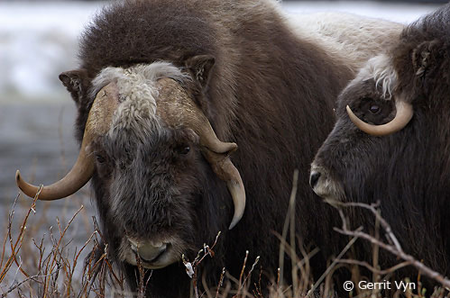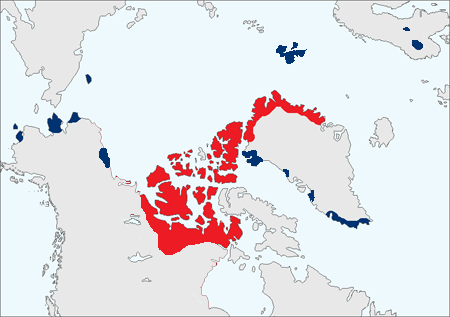
Musk Ox
Obtained from the Cornell Lab of Ornithology web site
A great piece came out in the Globe and Mail yesterday (7/28/09) that does an excellent job of laying out how the Canadian Boreal is one of the world's last great conservation opportunities. Here are a couple of quotes from it:
"the biggest "risk-of-risk" regions on Earth lie in Canada's Arctic and sub-Arctic. Animals such as caribou and musk ox, long believed to exist in such large numbers as to be unassailable, may be in a more precarious position than thought. How could these apparently robust species be at risk?"
"Latent-risk hot spots might provide cost-effective options for conservation," says Dr. Purvis, of the department of biological sciences at Britain's Imperial College. "They're places that are relatively intact. Preventing damage [there] is likely to be more effective than trying to repair it."
It seems that in conservation, as in other matters, a gram of prevention is worth a kilogram of cure.
"When the first settlers reached North America, a small bird called the passenger pigeon existed in the hundreds of billions. Thunderclouds of them blotted out the sun for hours; biologists suspect that this bird was the single biggest single-species biomass on Earth, bigger than the Atlantic cod or the Douglas fir that still blankets the Coast Mountains of British Columbia.
Yet like the North American bison, a single herd of which might number 50 million in the 1700s, the passenger pigeon was decimated in a few decades."
You can read the full piece from the Globe and Mail here: http://www.theglobeandmail.com/news/technology/science/is-the-musk-ox-the-next-dodo/article831330/
Below is a map of the Musk Ox range - you can see how far north they live. Red is established range, and blue is where they have been successfully reintroduced:

Reprinted with permission from Wikipedia

